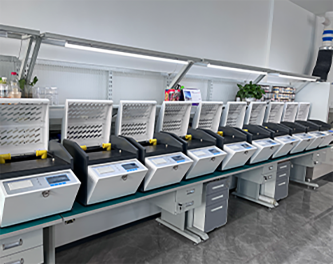 English
English


Understanding the Principles and Applications of Gas Chromatography in Analytical Chemistry
The Working Principle of Gas Chromatography
Gas chromatography (GC) is a powerful analytical technique widely used for separating and analyzing compounds that can be vaporized without decomposition. This method is particularly effective in the fields of chemistry, biochemistry, environmental testing, and food safety. The efficacy of gas chromatography stems from its precise separation capabilities, allowing for detailed analysis of complex mixtures. This article will delve into the working principle of gas chromatography, highlighting its components and operational processes.
At its core, gas chromatography involves the partitioning of a sample between a stationary phase and a mobile phase. The stationary phase is typically a liquid or a solid that is fixed to the column's walls, while the mobile phase is an inert gas, often helium or nitrogen, which transports the vaporized sample through the column. The choice of stationary phase is critical, as it influences the separation of the various components within the sample based on their chemical properties.
The Working Principle of Gas Chromatography
Once the sample has been injected and vaporized, it travels through the column where each component interacts with the stationary phase. Components that are less retained by the stationary phase move faster through the column, while those that interact more strongly with the stationary phase take longer to elute. This differential partitioning leads to the separation of the various components in the mixture.
working of gas chromatography

Elution is the next critical step in the gas chromatography process. As the individual components exit the column, they pass into a detector. Common detectors include flame ionization detectors (FID), thermal conductivity detectors (TCD), and mass spectrometers (MS). Each detector operates based on different principles, allowing for the identification and quantification of the separated compounds. For instance, FID works by burning the sample and measuring the resulting ionized species, whereas mass spectrometry provides detailed molecular information and mass-to-charge ratios of the compounds.
The results obtained from GC are typically displayed as a chromatogram, which is a graphical representation of the detector response as a function of time. Each peak in the chromatogram corresponds to a different compound in the sample. The area under each peak is proportional to the amount of that compound, allowing for quantitative analysis. By comparing the retention times and peak areas with those of known standards, analysts can identify and quantify the components within the mixture.
Gas chromatography offers numerous advantages, including high resolution, sensitivity, and speed. It can analyze both volatile and semi-volatile compounds with great precision. Moreover, advancements in technology have led to the development of automated systems and computerized data analysis, further enhancing the efficiency and reliability of gas chromatographic techniques.
In conclusion, gas chromatography is a fundamental analytical tool that leverages the principles of partitioning between a stationary and a mobile phase to achieve the separation and analysis of complex mixtures. Its applications are diverse and vital across various scientific fields, making it an indispensable technique in modern analytical chemistry. Understanding the working principle of GC enables researchers and analysts to utilize this powerful method effectively, driving discoveries and innovations in numerous domains.
-
Differences between open cup flash point tester and closed cup flash point testerNewsOct.31,2024
-
The Reliable Load Tap ChangerNewsOct.23,2024
-
The Essential Guide to Hipot TestersNewsOct.23,2024
-
The Digital Insulation TesterNewsOct.23,2024
-
The Best Earth Loop Impedance Tester for SaleNewsOct.23,2024
-
Tan Delta Tester--The Essential Tool for Electrical Insulation TestingNewsOct.23,2024





